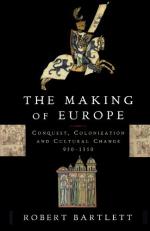|
This section contains 511 words (approx. 2 pages at 300 words per page) |

|
Second Age of Expansion. The works of geographers and the creation of academic positions for geography were spurred by nationalism and imperialism. Cartographers knew the basic outline of the continents and oceans by the beginning of the industrial era. The period between 1750 and 1914 was known as a "second age of expansion" when surveying the properties of flora, fauna, and the known land was emphasized.
Professional Geographers. The Prussian geographer Alexander von Humboldt was a prime example of this emphasis as he surveyed the Andes and Mexico before returning to Berlin to enjoy political and intellectual influence in the Prussian royal court. It was also during this period that the first university geography professorship was created in the German states at Berlin for Karl Ritter in 1820. After unification, German geography really advanced, and in the 1880s several more university chairs were created in...
|
This section contains 511 words (approx. 2 pages at 300 words per page) |

|




